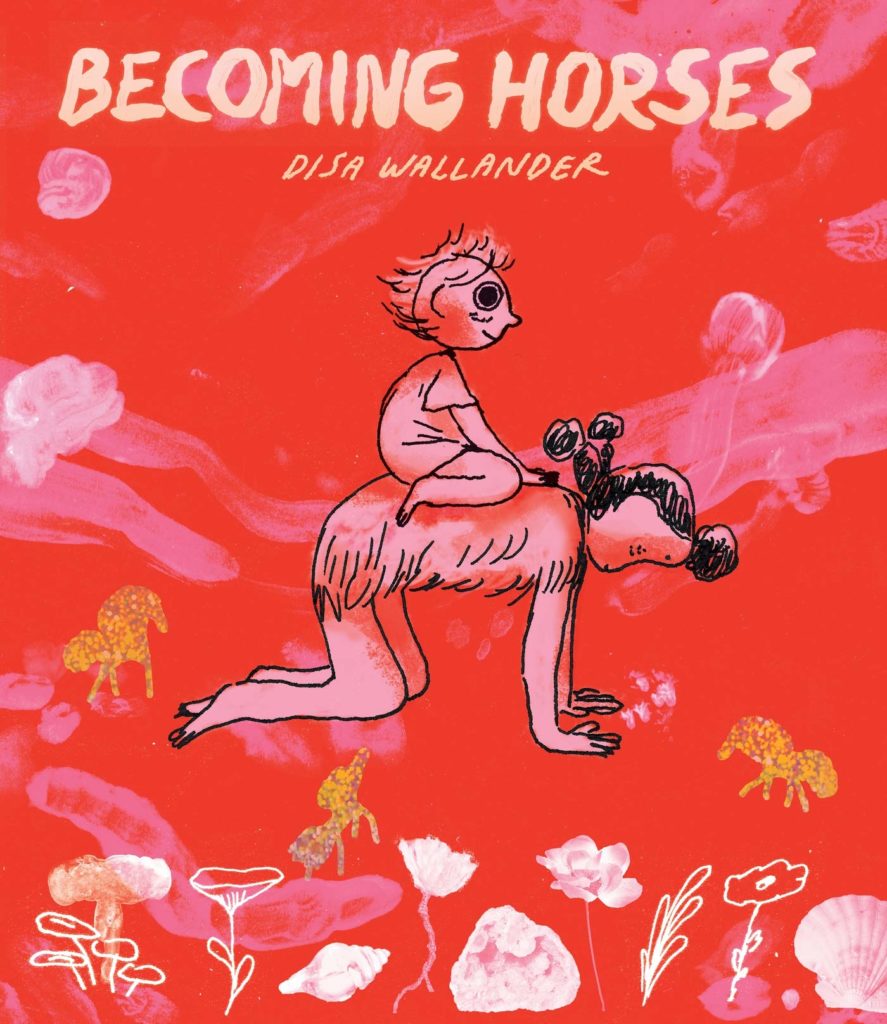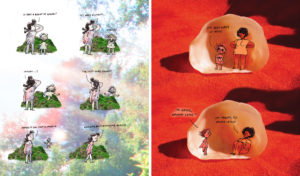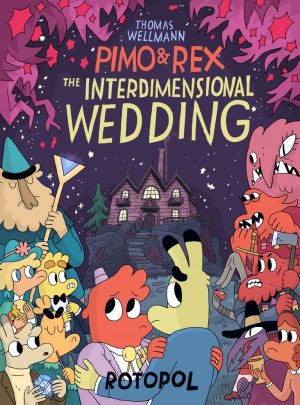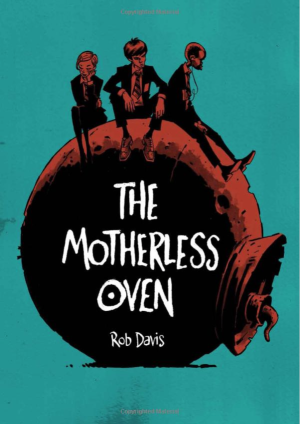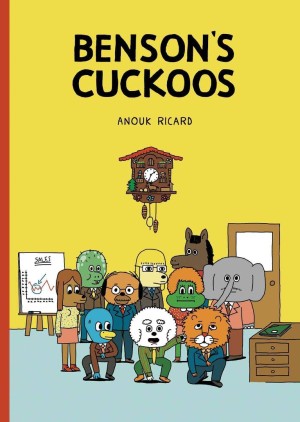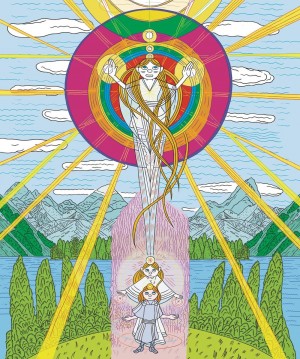Review by Woodrow Phoenix
You might take one look at the bright red and pink cover of Becoming Horses, with its expressively cartooned people, metallic horse shapes and collaged flowers, shells and rocks, and conclude that you are not interested in this naive styling because you are not a teenaged Instagram user. But you could be wrong. Have you ever loved a drawing, a painting, a film, a cartoon or a piece of music so much that you wished you could climb into it? Do you remember that feeling? Then Becoming Horses is for you.
Disa Wallander has a wonderfully loose, spontaneous-feeling, scratchy ink line, sometimes pen and sometimes brush. She combines her fluid drawings of people with backgrounds made of collaged, 3D elements, some invented and some natural (flowers, rocks, sky, etc) to create an otherworldly space for her stories to unfold in. The absence of lines to indicate borders between panels, or shapes to place the spoken dialogue in speech balloons gives her pages a painterly quality as her graphic assemblies define areas of activity for the reader to follow. Think of those astonishing photo-collages Jack Kirby used to make in the Fantastic Four to represent other dimensions. And now imagine Kirby as a young Swedish woman and channeling that same fearless inventiveness in her own original way. Intrigued?
Becoming Horses begins with a conversation between two nameless protagonists and the kind of question a child might ask on a warm summer day, looking up at the clouds: “was it always like this?” They begin walking, as if to find the answer somewhere in the landscape around them. They soon acquire a third friend and in a series of short, funny vignettes the three journey through a variety of settings and emotional states, meeting lots of women who are all exploring their own responses to being alive, to interacting with the world through what they create.
There is a wonderfully warm and insistent, humane energy to the way this book flows from one situation to the next, as the three protagonists experience physical, mental and emotional changes during their encounters. “We got eaten! And almost died!” they exclaim to a friendly guide. “Don’t worry, it’s not so different here,” she reassures them, “Things just might be a bit more real here than what you’re used to. Things inside you… take shape.” As she says this, an object materialises in front of her. She hands it to one of the three: “Hold that thought” who is surprised by the weight of it. “Heavy stuff, huh? Hahaha!” It’s a pointer to the eventual destination of our trio, and the journey rises to a gently cosmic conclusion before leaving our protagonists to reflect on where they have been, and where they are now. If you let this book carry you along and immerse you in its ruminative reflections on creativity and existence, Becoming Horses feels like a gift. A reminder to appreciate what, who and where you are. We need those reminders.
